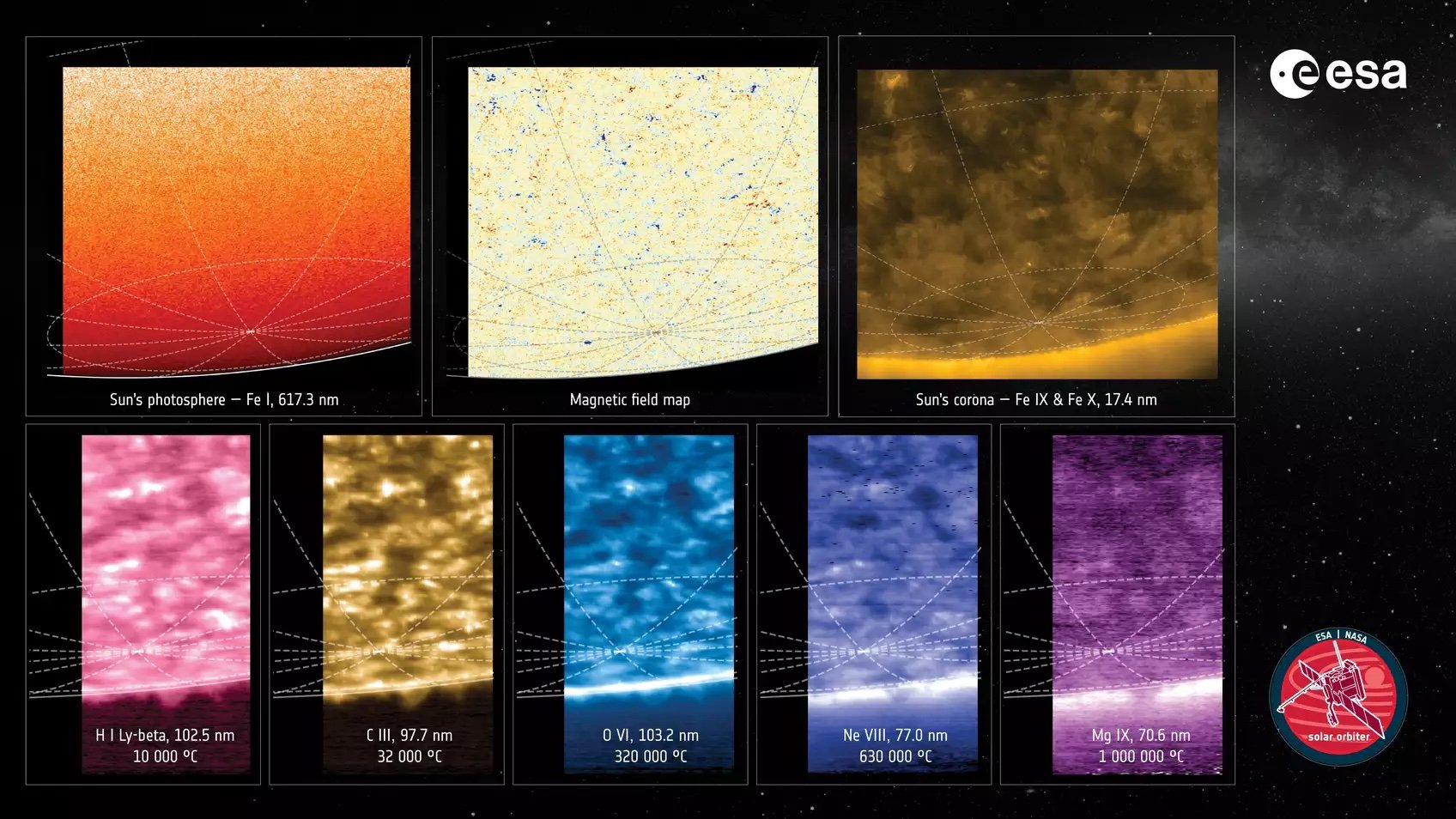For more than 60 years, various spacecraft and telescopes have journeyed through space to stare at the Sun, capturing haunting images of the giant ball of hot gas at the heart of our solar system. Our view of the star is limited, however, by Earth’s orbital plane, which allows us to observe the Sun’s equator head-on while its polar regions remain in a frustrating blind spot. Solar Orbiter is now the first to image the poles from outside the ecliptic plane, offering a rare look at its chaotic magnetic field.
On Wednesday, the European Space Agency (ESA) released the first clear images of the Sun’s south pole, revealing that both north and south magnetic polarities are currently present on the same side. The new images will help scientists better understand the Sun’s 11-year magnetic cycle and what governs its solar outbursts that sometimes result in geomagnetic storms on Earth.
Solar Orbiter used momentum from its flyby of Venus on February 18 to push itself out of the ecliptic plane that contains Earth’s orbit around the Sun. Around a month later, the spacecraft was able to view the star from an angle of 17 degrees below the solar equator, just enough to get a good view of the Sun’s south pole for the first time.
“We didn’t know what exactly to expect from these first observations – the Sun’s poles are literally terra incognita,” Sami Solanki, who leads Solar Orbiter’s Polarimetric and Helioseismic Imager instrument team from the Max Planck Institute for Solar System Research in Germany, said in a statement.
The science team used three instruments aboard Solar Orbiter to capture images of the Sun between March 16 and 17. Each instrument observes the Sun in a different way; the Polarimetric and Helioseismic Imager (PHI) captures the Sun in visible light, the Extreme Ultraviolet Imager (EUI) images it in ultraviolet, and the Spectral Imaging of the Coronal Environment (SPICE) instrument detects light emitted by charged gas above the Sun’s surface.
By combining the viewing powers of all three instruments, scientists observed the Sun’s south pole in turmoil. Normally, each polar region has its own magnetic field characteristics. As the Sun reaches a period of solar maximum during its 11-year cycle, its magnetic polarity flips, with the north and south magnetic poles reversing. During Solar Orbiter’s observations of the Sun, the polarity from the north and the south poles are both present in the south pole.
This marks a crucial time in understanding the Sun’s activity. After the magnetic field flips, a single polarity slowly builds up in the Sun’s poles and takes over. When the Sun reaches its solar minimum in about five to six years, the north and south poles will each have their own magnetic polarity. “How exactly this build-up occurs is still not fully understood, so Solar Orbiter has reached high latitudes at just the right time to follow the whole process from its unique and advantageous perspective,” Solanki said.

The scientists behind the mission used SPICE to measure how clumps of solar material move across the Sun’s surface. Using the Doppler effect, which describes changes in frequency of light or sound as it moves away or toward the source, the team created a velocity map showing how the material’s speed varies between the Sun’s poles and equatorial region. With the help of Solar Orbiter, scientists will gain a better understanding of why solar wind travels faster at the poles than it does at the Sun’s equator.
Solar Orbiter is just getting started. The recent observations are the first set of images captured from the spacecraft’s newly inclined orbit, but the spacecraft is gearing up for another Venus flyby on December 24, 2026, which will further tilt its orbit to 23 degrees below the equator to get an even better view of the Sun’s poles.
“This is just the first step of Solar Orbiter’s ‘stairway to heaven’: in the coming years, the spacecraft will climb further out of the ecliptic plane for ever better views of the Sun’s polar regions,” Daniel Müller, ESA’s Solar Orbiter project scientist, said in a statement. “These data will transform our understanding of the Sun’s magnetic field, the solar wind, and solar activity.”
Read the full article here












